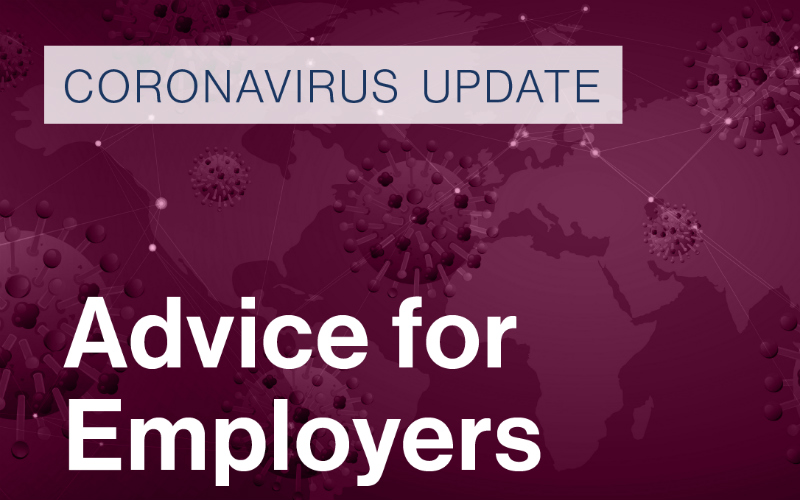
On 15 April 2020, the Chancellor published the Treasury Direction to HMRC setting out his instructions for the implementation of the Coronavirus Job Retention Scheme.
The information published so far has been in the form of guidance published here on the gov.uk website. Unlike the guidance, the Direction represents a more formal legal instruction to HMRC setting out the legal basis for the Scheme under the Coronavirus Act 2020.
It is important to remember that the Scheme has been developed at pace so not all questions are answered in the updates.
So what has the Direction clarified or changed since our last update?
Change: Employers can claim for employees who were on their payroll by 19 March 2020
To be able to claim under the Scheme, you must have a PAYE scheme which was registered on HMRC’s real time information system on 19 March 2020. Employers can claim for employees on their PAYE scheme by this date.
This has changed from the previous guidance which provided a cut-off date of 28 February 2020. Many employees who were not eligible under the previous guidance (because they had only recently started work) will now be eligible.
However, there is a slight sting in the tail as there is an additional requirement that a payment must have been made to employees which is shown in a return under the PAYE Regulations. The Guidance has also been updated and perhaps is simpler to understand requiring the employee to have been on a RTI submission on or before 19 March 2020. This means employees who have not yet been on a payroll run prior to 19 March 2020 are not covered by the Scheme.
Change: Employees do not need to be at risk of lay-off to be eligible
The previous guidance advised that only employees who would otherwise be at risk of being laid off would be covered by the Scheme. The Direction defines furloughed employees as those:
- Who have been instructed to cease all work;
- For 21 days or more;
- Due to the circumstances arising as a result of coronavirus.
This definition captures a much wider pool of employees and does not limit the Scheme to those at risk of lay-off. Even staff whose work is still available could be furloughed, provided they have been instructed to stop working for coronavirus related reasons.
Change: Does this mean that staff with childcare responsibilities can be furloughed?
Yes. As well as the new definition under the Direction, the online guidance has been updated to confirm that employees with caring responsibilities can be now be furloughed under the Scheme. This would include employees who need to look after their children due to school closures, where they cannot work from home.
However, neither the guidance not the Direction provides that staff in this position must be placed on furlough, only that they can be. It would therefore appear that the decision is ultimately up to the employer whether to furlough the employee or not. It is also not clear whether a refusal to furlough someone in these circumstances could be a breach of the implied duty of trust and confidence entitling them to resign and claim constructive dismissal, or if there could be an indirect discrimination element to such a refusal which you would need to objectively justify. This is currently unknown and will largely be down to specific circumstances. Please contact us for more information if you require advice in this regard.
Change: Can staff with underlying health conditions now be furloughed?
Employees who are advised by public health guidance to shield (i.e. they have received a letter from their GP or the NHS) can be placed on furlough. The guidance previously indicated that shielding employees need to be at risk of lay-off, but that condition has now been removed.
For staff with underlying health conditions who do not fall within the extremely vulnerable category, the position is less clear. While the guidance explicitly allows employees with caring responsibilities and shielding requirements to be furloughed, it does not mention those with underlying health conditions.
That said, staff in this category would now arguably fall within the scope of those being asked to cease all work due to the circumstances arising as a result of coronavirus. Again, it appears to be at the discretion of the employer whether to furlough such employees or not.
Clarified: Employers need employee agreement to be placed on furlough
Ceasing all work means employees cannot carry out any work for their employer or another person connected to their employer. The Direction specifies that the employee must have agreed to cease all work, so employers will require written confirmation (by letter or email) that the employee agrees to be furloughed in all cases, even where they have a contractual right to lay that employee off.
Clarified: The employee must be paid the lower of £2,500 or 80% of their reference salary
The Direction clarifies that, in order to be eligible for reimbursement, the employee must be being paid either 80% of their reference salary or at least £2,500.
No reimbursements will be made for other statutory payments, meaning employees cannot be on furlough at the same time as being on Statutory Sick Pay, Statutory Maternity Pay or other Parental leave. However, the guidance still provides that employers can claim for enhanced, contractual parental pay so that remains unchanged.
Change: How to calculate reference salary for fixed rate employees
Reference salary for a fixed rate employee is the amount that was paid to that employee during the last pay period, ending on or before 19 March 2020.
This is a change from the previous guidance which indicated salary for fixed rate employees would be their earnings as of 28 February 2020.
The Direction sets out who should be considered a fixed term employee. This means employees who earn an annual salary paid in instalments, for a number of hours as set out in their contract, and that those hours do not normally vary according to business, economic or agricultural seasonal considerations.
Clarified: How to calculate reference salary for variable hours employees
This remains the same as the previous guidance. For those with variable pay the Direction clarifies that the reference salary is the greater of:
- the average monthly (or daily or other appropriate pro rata) amount paid to the employee for the period comprising the tax year 2019-20 (or, if less, the period of employment)before the period of furlough began, and
- the actual amount paid to the employee in the corresponding calendar period in the previous year.
What has been updated is what payments should and should not be taken into account when calculating reference salary.
Changed: What should be included and excluded in the calculation of reference salary?
The Direction states that no account should be taken of anything which is not “regular salary or wages”. This will only includes payments which:
- Are not conditional on any matter;
- Are not a benefit of any other kind;
- Arise from a legally enforceable agreement or arrangement (e.g. contract of employment); and
- Cannot vary according to:
- Performance of the business;
- Contribution of the employee to the performance of the business;
- Performance of any duties of employment; or
- Any similar considerations.
As such, regular wages would not include any bonuses, commissions, gratuity, non-monetary benefits or other conditional payments that depend on performance or other considerations. Such payments should not be taken into account when calculating reference salary. However the Guidance clarifies that past overtime, fees and compulsory commission payments can still be included in the reference salary.
When placing employees on furlough, employers should be wary of making salary payments during furlough conditional on reimbursement under the Scheme. As above, conditional payments are expressly excluded from the meaning of regular wages. The Direction provides for reimbursement of wages which the employer “reasonably expects to be paid”, suggesting that earnings being deferred until the Scheme reimburses the employer may still be covered. It is important to distinguish between payments which are deferred and those which are conditional.
Not known: Does the reference salary calculation include holiday and sick pay?
The calculation is less clear for employees who may have received holiday or sick pay in April 2019 or during the last tax year. The guidance does not explicitly advise whether or not such payments are included in the meaning of “regular wages”.
A strict interpretation of the Direction would suggest that reference salary should be calculated based on “actual amount paid” to the employee. As SSP and holiday are not expressly excluded, it is arguable that they should be taken into account where they were actually paid. This is subject to further clarification from HMRC.
The position is different if the employee is returning from another form of statutory leave after 28 February 2020. In that situation, claims should be calculated against the employee’s normal salary before tax, not the pay they received whilst on leave. An employee cannot be on statutory leave and furlough at the same time.
Clarified: Company directors can only undertake certain directors’ duties while on furlough
Our earlier update confirmed that salaried company directors can be furloughed provided certain criteria are met, and those who are on furlough can still carry out certain statutory duties. However, the Direction has clarified that the only statutory duties which can be undertaken during furlough are those arising from an Act of Parliament relating to:
- the filing of company accounts; or
- the provision of other information relation to the administration of the company
This is a much narrower definition that the previous guidance provided, which suggested that directors would be limited to carrying out duties that were “reasonably necessary”. The above clarifications make the position considerably less open to interpretation.
Not known: Annual leave
One key area that remains outstanding is in regards to annual leave. It has yet to be clarified whether or not annual leave accrues and can be taken during furlough. Neither the Direction nor the latest guidance addresses this issue, so please consult our earlier updates for guidance.
Insight from Noele McClelland, Employment Law Partner. For more information contact Noele or any member of the Employment team on 03330 430350.
